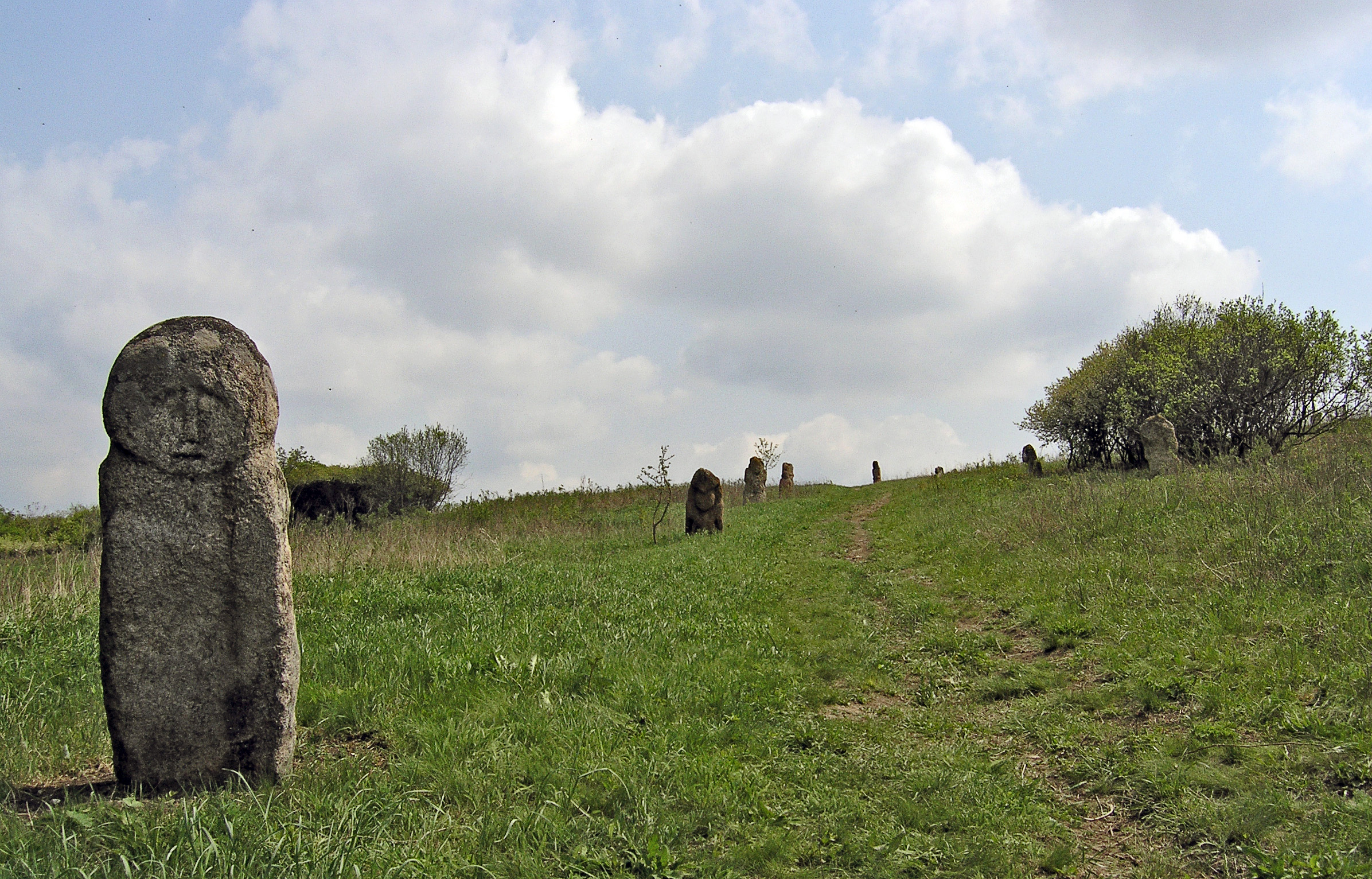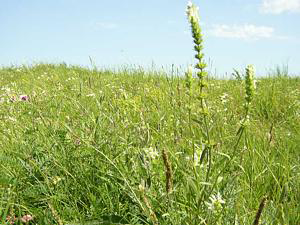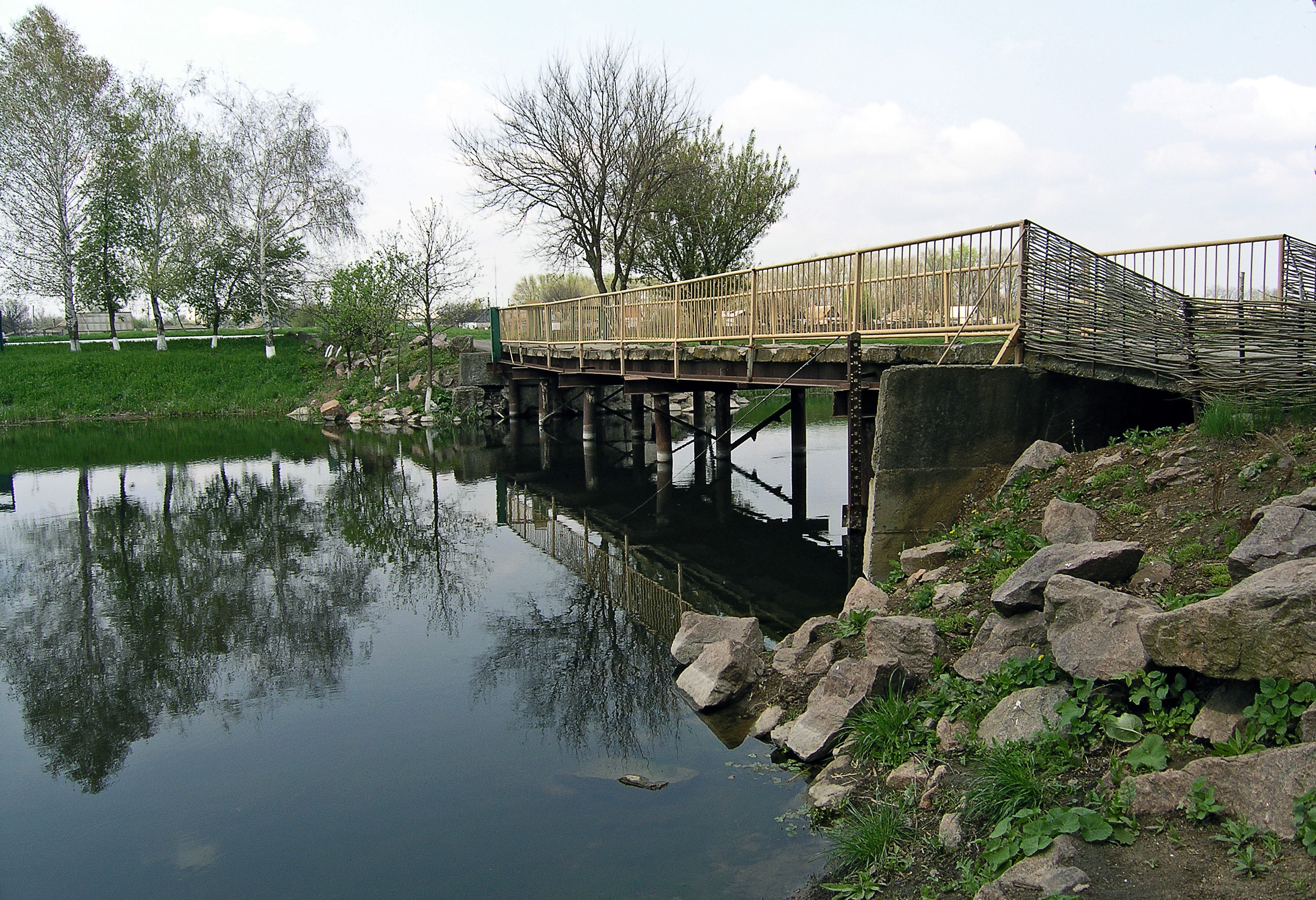Get Data
Summary:
This data set provides two data files in text format (.txt). One file contains biomass measurements made in 1948 and between 1967 and 1970 for a humid temperate steppe in the Khomutovskaya Steppe Nature Reserve in the Donezk Region of Ukraine. The second file contains monthly and annual climate data for the study site for the period 1955-1972.
Biomass measurements were made once in July of 1948 and biweekly to monthly during the growing season (April-August/September) from 1967 to 1970 at the permanent Khomutovskaya research station. Above-ground net primary procuction (ANPP) was calculated for each sampling date and cumulatively over the four years, 1967-1970. Averaged over the time series, above-ground live phytomass, standing dead, and litter biomass were estimated to be 340, 90, and 240 g/m2 (dry matter weight), respectively, while below-ground phytomass and mortmass were estimated to be 1,675 and 792 g/m2 (dry matter weight), respectively. ANPP was estimated to be 460 g/m2/yr. BNPP was estimated to be 1,340 g/m2/yr.
The study site is one of eight major grassland types of Eurasia which encompass an extremely wide climatic gradient in the direction of increasing maximum summer temperatures and continentality and decreasing precipitation in a north-west to the south-east band of steppes in the European and Asian parts of the former USSR (Commonwealth of Independent States). Khomutov, on calcareous chernozem soils, is representative of the typical Priazoviya feather-grass steppe that was once widely distributed over the Black Sea Lowlands. The site had annual mean maximum/minimum temperatures of 31.9/-9.7 degrees C and annual mean precipitation of 437.8 mm for the period 1953-1989.
Revision Notes: Only the documentation for this data set has been modified. The data files have been checked for accuracy and are identical to those originally published in 1996.

Figure 1. The Khomutovskaya Steppe Natural Reserve with ritual stone sculptures.
Additional Documentation
The NPP data collection contains field measurements of biomass, estimated NPP, and climate data for terrestrial grassland, tropical forest, temperate forest, boreal forest, and tundra sites worldwide. Data were compiled from the published literature for intensively studied and well-documented individual field sites and from a number of previously compiled multi-site, multi-biome data sets of georeferenced NPP estimates. The principal compilation effort (Olson et al., 2001) was sponsored by the NASA Terrestrial Ecology Program. For more information, please visit the NPP web site at http://daac.ornl.gov/NPP/npp_home.shtml
Data Citation:
Cite this data set as follows:
Gilmanov, T.G. 2015. NPP Grassland: Khomutov, Ukraine, 1948 and 1967-1970, R1. Data set. Available on-line [http://daac.ornl.gov] from Oak Ridge National Laboratory Distributed Active Archive Center, Oak Ridge, Tennessee, USA. http://dx.doi.org/10.3334/ORNLDAAC/146
This data set was originally published as:
Gilmanov, T.G. 1996. NPP Grassland: Khomutov, Ukraine, 1948-1970. Data set. Available on-line [http://daac.ornl.gov] from Oak Ridge National Laboratory Distributed Active Archive Center, Oak Ridge, Tennessee, U.S.A.
Table of Contents:
- 1 Data Set Overview
- 2 Data Description
- 3 Applications and Derivation
- 4 Quality Assessment
- 5 Acquisition Materials and Methods
- 6 Data Access
- 7 References
1. Data Set Overview:
Project: Net Primary Productivity (NPP)
Long-term ecological research at grasslands within the former USSR collected a large amount of data on phytomass, productivity and element cycling, together with climatic and soil regimes for various types of grassland ecosystems. These grasslands are found in different natural "continentality" climatic zones in the direction of increasing maximum summer temperatures, decreasing precipitation north-west to the south-east. The grassland types range from the luxuriant highly productive meadow-steppes of Central Russia to the ultra continental steppes of Central Asia and the arid ephemeral grasslands in the Middle-Asian republics of the former USSR.
The results of the USSR studies are mostly reported in the Russian literature but were summarized and used more recently by Gilmanov et al. (1997) to assess grassland differences and CENTURY model robustness across this wide environmental gradient.
The Khomutov data set contains biomass measurements that were made once in July of 1948 and biweekly during the growing season (April-August/September) from 1967 to 1970 at the permanent Khomutovskaya research station. ANPP was calculated for each sampling date and cumulatively over the four years, 1967-1970. The study site represents the typical humid temperate steppe that was once widely distributed over the Black Sea Lowlands. The site has an annual mean maximum/minimum temperature of 31.9/-9.7 C and annual mean precipitation of 437.8 mm for the period 1953-1989.
Averaged over the time series, above-ground live phytomass, standing dead, and litter biomass were estimated to be 340, 90, and 240 g/m2 (dry matter weight), respectively, while below-ground phytomass and mortmass were estimated to be 1,675 and 792 g/m2 (dry matter weight), repectively (Gilmanov et al., 1997). ANPP was estimated to be 460 g/m2/yr (Gilmanov et al., 1997) which agrees with values published in Olson et al. (2013a, b) and Scurlock and Olson (2013). Evdokimova et al. (1976) estimated annual root biomass increment on virgin Khomutov steppe to be 1,340 g/m2/yr.
2. Data Description:
Spatial Coverage
Site: Khomutov, Ukraine
Site Boundaries: (All latitude and longitude given in decimal degrees)
| Site (Region) | Westernmost Longitude | Easternmost Longitude | Northernmost Latitude | Southernmost Latitude | Elevation (m) |
|---|---|---|---|---|---|
| Khomutov, Ukraine | 47.17 | 47.17 | 38 | 38 | 75 |
Spatial Resolution
Information not available
Temporal Coverage
Biomass measurements at the Khomutov site were made in July 1948 and seasonally during the four-year period 1967-1970. ANPP estimates are available for 1967-1970. Cumulative ANPP was estimated for each sampling date.
Temporal Resolution
Above-ground biomass compartments (live phytomass, standing dead, and litter) were harvested once in early July in 1948 and at biweekly to monthly intervals each year from 1967 through 1970. The 1967-1970 data were used to calculate biweekly to monthly estimates of ANPP. Cumulative ANPP was estimated for each sampling date.
Data File Information
Table 1. Data file descriptions
| FILE NAME | TEMPORAL COVERAGE | FILE CONTENTS |
|---|---|---|
| khm_npp.txt | 1948/07/04 and 1967/04/07-1970/12/31 | Above-ground biomass data and ANPP for the Khomutov grassland site |
| khm_cli.txt | 1955/01/01-1972/12/31 | Climate data from a weather station near the Khomutov grassland site |
NPP Data. Biomass and ANPP estimates are provided in one text file (.txt format). The variable values are delimited by semicolons. The first 18 lines are metadata; data records begin on line 19. There are gaps in the time series from 1949 through 1966. All biomass units are expressed in g/m2 (dry matter weight). ANPP and cumulative ANPP are expressed as g/m2 per sampling date (dry matter weight).
Table 2. Column headings in NPP file.
| COLUMN HEADING | DEFINITION | UNITS |
|---|---|---|
| Site | Site where data were gathered (code refers to site identification) | text |
| Treatmt | Long term management of site (code refers to treatment described in metadata in data file) | |
| Year | Year in which data were collected | yyyy |
| Mn | Month in which data were collected | mm |
| Dy | Day on which data were collected | dd |
| Tyear | Date in decimal year (year plus the Julian date divided by 365) | numeric |
| AGbiomass | Above-ground biomass | g/m2 |
| Stdead | Standing dead matter | |
| Litter | Litter found above ground | |
| AGtotmatter | Total above-ground biomass (live + dead + litter) | |
| ANPP | Above-ground net primary production | g/m2/per sampling date |
| CUMANPP | Cumulative above-ground net primary production |
Sample NPP Data Record
| Site;Treatmt;Year;Mn;Dy;Tyear;AGbiomass;Stdead;litter;AGtotmatter;ANPP;CUMANPP khm;lngtrm ;1948;07;04;1948.510; 333.7; 40.0; 65.0; 438.7; 0.0; 0.0 khm;lngtrm ;1967;04;07;1967.270; 109.6; 1.2; 919.3;1030.1; 0.0; 0.0 khm;lngtrm ;1967;04;20;1967.300; 194.3; 13.6; 741.1; 949.0; 97.1; 97.1 khm;lngtrm ;1967;05;05;1967.340; 248.8; 19.8; 411.5; 680.1; 60.7; 157.8 khm;lngtrm ;1967;05;25;1967.400; 344.4; 41.7; 246.2; 632.3; 117.5; 275.3 khm;lngtrm ;1967;06;05;1967.430; 339.8; 51.9; 111.3; 503.0; 5.6; 280.9 khm;lngtrm ;1967;06;20;1967.470; 273.3; 80.6; 98.8; 452.7; 0.0; 280.9 khm;lngtrm ;1967;07;15;1967.540; 198.8; 109.9; 97.7; 406.4; 0.0; 280.9 khm;lngtrm ;1967;07;29;1967.580; 218.6; 153.4; 108.1; 480.1; 73.7; 354.6 khm;lngtrm ;1967;08;14;1967.620; 122.4; 201.8; 93.3; 417.5; 0.0; 354.6 khm;lngtrm ;1967;08;28;1967.660; 82.3; 214.8; 76.6; 373.7; 0.0; 354.6 khm;lngtrm ;1967;12;31;1968.000; 0.0; 100.0; 300.0; 400.0; 108.7; 463.3 khm;lngtrm ;1968;04;15;1968.290; 92.7; 2.1; 387.6; 482.4; 0.0; 11.0 khm;lngtrm ;1968;04;28;1968.330; 169.4; 13.2; 301.6; 484.2; 87.8; 87.8 |
Climate Data. Climate data are provided in one text file (.txt format). The first 18 lines are metadata; data records begin on line 19. The variable values are delimited by semicolons. There are no missing values.
Sample Climate Data Record
|
Site;Temp;Parm; Jan; Feb; Mar; Apr; May; Jun; Jul; Aug; Sep; Oct; Nov; Dec; Year khm;mean;prec; 44.1; 28.6; 22.2; 29.0; 42.0; 56.1; 42.9; 34.9; 30.3; 19.8; 43.2; 44.8; 437.8 khm;mean;tmax; -1.2; -0.2; 5.0; 15.9; 23.9; 28.6; 30.4; 30.0; 23.1; 14.9; 7.8; 1.7; 31.9 khm;mean;tmin; -7.8; -7.2; -4.0; 3.3; 9.7; 14.8; 16.2; 15.4; 8.5; 3.1; -0.4; -4.7; -9.7 khm;numb;prec; 18.0; 18.0; 18.0; 18.0; 18.0; 18.0; 18.0; 18.0; 18.0; 18.0; 18.0; 18.0; 18.0 khm;numb;tmax; 18.0; 18.0; 18.0; 18.0; 18.0; 18.0; 18.0; 18.0; 18.0; 18.0; 18.0; 18.0; 18.0 khm;numb;tmin; 18.0; 18.0; 18.0; 18.0; 18.0; 18.0; 18.0; 18.0; 18.0; 18.0; 18.0; 18.0; 18.0 khm;stdv;prec; 30.4; 22.0; 15.9; 19.2; 34.7; 33.9; 30.4; 30.1; 28.0; 15.3; 31.8; 31.2; 84.0 khm;stdv;tmax; 4.2; 3.6; 2.0; 2.0; 3.0; 3.7; 2.0; 1.8; 2.2; 2.2; 1.8; 2.4; 2.6 khm;stdv;tmin; 4.2; 3.6; 2.0; 2.0; 3.0; 3.7; 2.0; 1.8; 2.2; 2.1; 1.8; 2.4; 3.8 khm;1955;prec; 47.4; 79.8; 10.0; 20.6; 11.9; 70.2; 14.1; 94.6; 11.4; 15.0; 65.5; 56.8; 497.3 khm;1955;tmax; 3.5; 4.9; 4.6; 13.4; 22.6; 24.9; 30.1; 28.7; 24.0; 18.7; 4.3; 0.2; 30.1 khm;1955;tmin; -3.3; -2.1; -4.4; 0.8; 8.4; 11.1; 15.8; 14.1; 9.4; 6.8; -3.9; -6.2; -6.2 … Where, Temp (temporal) - specific year or long-term statistic: mean = mean based on all years numb = number of years stdv = standard deviation based on all years Parm (parameter): prec = precipitation for month or year (mm) tmax = mean maximum temperature for month or year (C) tmin = mean minimum temperature for month or year (C) |
3. Data Application and Derivation:
Data on biomass dynamics and productivity were recently assembled and checked as part of a series of grassland data sets covering a wide range of climate and "continentality" (increasing maximum summer temperatures, decreasing precipitation) from the north-west to the south-east in the Commonwealth of Independent States (former USSR) (Gilmanov et al., 1997). These grasslands represent a wide environmental gradient from the luxuriant highly productive meadow-steppes of Central Russia to the ultra continental steppes of Central Asia and the arid ephemeral grasslands in the Middle-Asian republics of the former USSR. The field data from these study sites were used by Gilmanov et al. (1997) to assess grassland differences and CENTURY model robustness.
Grassland biomass dynamics data are provided for comparison with models and estimation of NPP. Climate data are provided for use in driving ecosystem/NPP models.
4. Quality Assessment:
Net primary production of grasslands is subject to a number of different methods of estimation from biomass data, some of which may be inappropriate for particular biome types. Methodology of estimation/calculation needs to be taken into account, as well as methodology of measurement, when making comparisons between different regions. Errors in biomass measurement may also occur between different study sites. For short time series of data it may be assumed that measurement methodology remains consistent; however, over very long time series changes in staff, tools, etc. may lead to "calibration" errors.
The time series for this data set is relatively short (1967-1970) and this limitation makes it difficult to reconcile seemingly questionable data. For example, litter biomass collected on 7 April 1967 at Khomutov was much higher than on any other sampling date and higher than the average amount of litter for the period of record. Since litter is mostly decomposed within two years, one may infer that the previous year or two were highly productive which led to a substantial input to the litter compartment in 1967.
5. Data Acquisition Materials and Methods:
Site Information
The Khomutov study site is located within the Khomutovskaya Steppe Natural Reserve, close to the city of Mariupol (formerly Zhdanov) in southeast Ukraine, near the Black Sea. The steppe, also known as a motley sheep's fescue/feather grass steppe, is a humid continental grassland that was once widespread around the Black Sea Lowlands. The Natural Reserve covers more than 1,000 ha. It contains more than 500 varieties of steppe plants including rare and endemic plants. The species richness of this plant community is 23 species per 1 m2 and 60 species per 100 m2, and is dominated by Stipa lessingiana, Stipa capillata, Festuca sulcata, Poa angustifolia, Linozyrus villosa, Medicago romanica, and Salvia nutans. The natural conditions, phytomass, and productivity dynamics of this ecosystem are described by Bystrickaya and Osychnyuk (1975).

Figure 2. The Khomutov grassland. This is a typical plain feather-grass steppe. It contains more than 500 varieties of steppe plants including rare and endemic plants.
Table 3. Site characteristics
| Description | Values |
|---|---|
| mean annual precipitation | 441 mm |
| mean monthly minimum temperature | -7.8 degrees C (Jan) |
| mean monthly maximum temperature | 30.4 degrees C (July) |
| vegetation type | typical steppe |
| dominant species | Stipa lessingiana (C3) |
| historical long-term management regime | annual mowing |
| max above-ground live biomass (typical month) | 240 g/m2 |
| soil type | chernozem/vermiboroll |
| soil pH | 7.4 |
| soil texture (sand/ silt/ clay) | 0.02 / 0.28 / 0.52 |
| soil carbon content | 46,930 g/m2 (0-20 cm) |
| soil nitrogen content | 580 g/m2 (0-20 cm) |
Methods
Methodological aspects of field experimental studies of biomass and production of grassland ecosystems in the Commonwealth of Independent States (former USSR) were summarized by Titlyanova (1988) [in Russian]. The methods of field measurements of above-ground and below-ground biomass in Russian grasslands are based on the harvest technique and with respect to sampling area, replication, etc., are very close to the methods used by western ecologists during the International Biological Programme (IBP) studies (e.g., Milner and Hughes, 1968; Sims and Coupland, 1979). The Russian approach to estimation of the annual production of grassland plant communities (with subdivision on above- and below-ground components) is based on a calculation procedure utilizing data of repeated sampling (usually biweekly) during the season of live, standing dead and litter fractions of phytomass. This method of calculation gives the estimates of production which are 1.6 to 2.0 times higher than the seasonal maximum of the standing crop of the corresponding phytomass fraction (Titlyanova, 1988).
The natural conditions, phytomass, and productivity dynamics of the Khomutovskaya steppe are described by Bystrickaya and Osychnyuk (1975). This data set is part of a series of grassland data sets assembled and checked by Dr. Tagir Gilmanov (Gilmanov et al., 1997) from primary literature.

Figure 3. A wooden bridge leads to the entrance to the Khomutovskaya Steppe Nature Preserve in Donetsk Oblast, Ukraine.
6. Data Access:
This data set is available through the Oak Ridge National Laboratory (ORNL) Distributed Active Archive Center (DAAC).
Data Archive:
Web Site: http://daac.ornl.gov
Contact for Data Center Access Information:
E-mail: uso@daac.ornl.gov
Telephone: +1 (865) 241-3952
7. References:
Bystrickaya, T.L,. and V.V. Osychnyuk. 1975. Soils and primary biological productivity of the steppes of Pryazovye (as exemplified by the "Khomutovskaya Steppe" reserve). Nauka, Moscow. 112 pp.
Evdokimova, T.I., L.A. Grishina, V.D. Vasilyevskaya, E.M. Samoilova, and T.L. Bystritskaya. 1976. Biogeochemical cycles of elements in some natural zones of the European USSR. Ecol. Bull. (Stockholm) 22: 135-155.
Gilmanov, T.G., W.J. Parton and D.S. Ojima. 1997. Testing the CENTURY ecosystem level model on data sets from eight grassland sites in the former USSR representing a wide climatic/soil gradient. Ecological Modelling 96: 191-210. doi: 10.1016/S0304-3800(96)00067-1
Milner, C., and R.E. Hughes. 1968. Methods for the Measurement of the Primary Production of Grassland. IBP Handbook No.6. Blackwell, Oxford.
Olson, R.J., K.R. Johnson, D.L. Zheng, and J.M.O. Scurlock. 2001. Global and Regional Ecosystem Modeling: Databases of Model Drivers and Validation Measurements. ORNL Technical Memorandum TM-2001/196. Oak Ridge National Laboratory, Oak Ridge, Tennessee, U.S.A.
Olson, R.J., J.M.O. Scurlock, S.D. Prince, D.L. Zheng, and K.R. Johnson (eds.). 2013a. NPP Multi-Biome: Global Primary Production Data Initiative Products, R2. Data set. Available on-line [http://daac.ornl.gov] from the Oak Ridge National Laboratory Distributed Active Archive Center, Oak Ridge, Tennessee, U.S.A. doi:10.3334/ORNLDAAC/617
Olson, R.J., J.M.O. Scurlock, S.D. Prince, D.L. Zheng, and K.R. Johnson (eds.). 2013b. NPP Multi-Biome: NPP and Driver Data for Ecosystem Model-Data Intercomparison, R2. Data set. Available on-line [http://daac.ornl.gov] from the Oak Ridge National Laboratory Distributed Active Archive Center, Oak Ridge, Tennessee, U.S.A. doi:10.3334/ORNLDAAC/615
Scurlock, J.M.O., and R.J. Olson. 2013. NPP Multi-Biome: Grassland, Boreal Forest, and Tropical Forest Sites, 1939-1996, R1. Data set. Available on-line [http://daac.ornl.gov] from Oak Ridge National Laboratory Distributed Active Archive Center, Oak Ridge, Tennessee, U.S.A. doi:10.3334/ORNLDAAC/653
Sims, P.L., and R.T. Coupland. 1979. Producers, pp. 49-72. IN: Coupland, R.T. (ed.). Grassland Ecosystems of the World: Analysis of Grassland and Their Uses. Cambridge University Press. 432 pp.
Titlyanova, A.A. 1988. Methodology and methods of studying of the production-destruction processes in herbaceous ecosystems, pp. 3-10. IN: Ilyin, V.B. (ed.). Biologicheskaya produktivnost' travyanykh ecosistem [Biological productivity of herbaceous ecosystems]. Nauka, Novosibirsk. (in Russian).